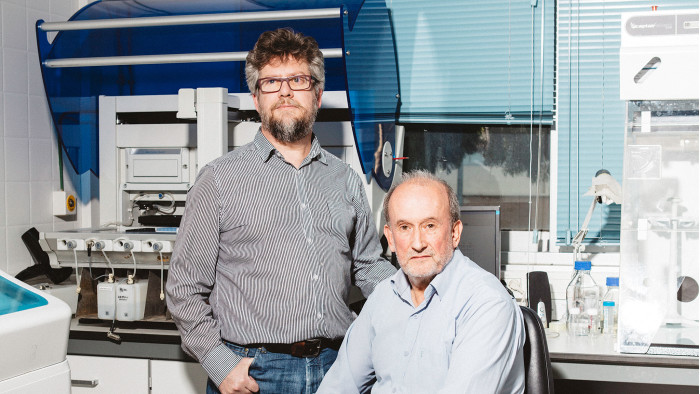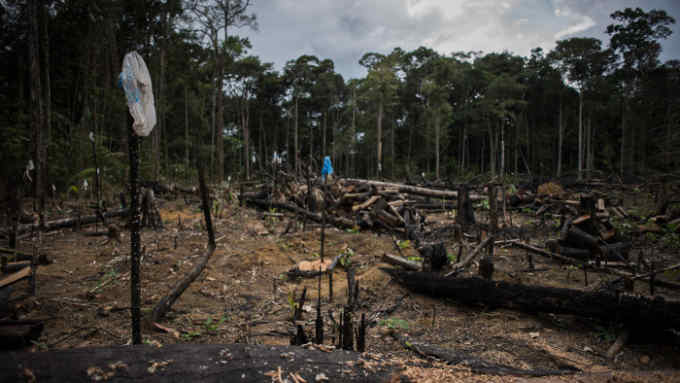A mysterious leishmaniasis outbreak in Spain

Roula Khalaf, Editor of the FT, selects her favourite stories in this weekly newsletter.
When the health authorities in Fuenlabrada, a southwest suburb of Madrid, noticed a spike in cases of the tropical disease leishmaniasis in 2010, their efforts to track down its origins became an epidemiological detective story. Leishmaniasis has been endemic in dogs in southern Europe for centuries, but there is widespread acquired immunity among humans. Spain normally has about 200 cases in humans a year, but in the course of this outbreak (later determined as being between 2009 and 2015), 299 cases were reported in Madrid, 223 of them in Fuenlabrada.
Dr Juan Víctor San Martín of the department of internal medicine at Fuenlabrada hospital spotted some anomalies. “The number of people who were getting sick was much higher than expected and only a small number were in high-risk categories — that is, small children or people who are immune-compromised, such as those with HIV,” he says.
The leishmaniasis parasite is transmitted to humans by a tiny, silent sandfly. There are two main types of the disease: cutaneous, which causes skin ulcers, and visceral, which affects the organs, especially the spleen and liver, and can be fatal if not treated. It is also carried by dogs. “Cases among humans are always accompanied by an increase in infections among dogs,” says Dr Javier Moreno, an immunologist and parasitologist at the National Microbiology Centre at the Carlos III Institute of Health in Madrid. “We tested over 1,000 dogs [in Fuenlabrada], but most were negative.”
Puzzled, the scientists thought they might be facing a new strain of the disease for which humans had no acquired immunity. But the cause of the outbreak turned out to be more unusual.
A high proportion of the cases reported in Fuenlabrada were from an area near a park. “The first thing we noticed [there] was the enormous number of hares and rabbits,” says Dr Ricardo Molina, a specialist in medical entomology at the National Microbiology Centre. The triangular park is bordered by two main roads and a housing development. When the second road was completed in 2008, the animals were effectively trapped in the park but also isolated from natural predators — sparking a population explosion. Molina had a theory: “We deduced that with so many hares there was probably a large population of the sandfly, too, as hare’s blood is one of its favourite foods. When we analysed the flies’ blood, most of it was from rabbits, then hares, then humans. We found blood from a dog in only one fly.”
Moreno says it was an example of how several social and environmental factors, none significant in itself, can come together to cause an epidemic. “It would have been almost impossible to anticipate,” he says.
In 2011, the hares and rabbits were culled and the area fumigated to kill the flies. However, San Martín criticises the health authorities for not alerting the public to the outbreak until mid-2011 and says the response to the epidemic was badly co-ordinated (leishmaniasis is a notifiable disease, so the authorities would have been alerted from the start). He adds that while some people blame immigration for the spread of tropical diseases, immigrants in fact often suffer more than indigenous peoples. “Many of my patients are sub-Saharan Africans and have been affected disproportionately because of their lack of immunity,” he says.
The worst affected area of Fuenlabrada has a large immigrant African population, especially from non-endemic countries such as Nigeria and Senegal. Even so, Africans made up a higher proportion of patients (some 20 per cent) with the more serious, visceral variety of the disease than they did of the local population as a whole.
“What we’ve learnt from Fuenlabrada is that the transmission of these diseases is complex and changeable,” says Dr Albert Picado, leishmaniasis co-ordinator at the Barcelona Institute for Global Health. “The Madrid epidemic shows the effects that a change in land use can have. It isn’t just the movement of people and animals that spreads disease.”
Leishmaniasis is inching its way north. A 2016 British study estimated there were 60,000-80,000 infected dogs in the UK. This is partly a result of people taking their pets on holiday, Moreno says, or adopting Spanish strays. “With global warming [the sandflies] will move north and we will start seeing cases [in humans].”
The 6th World Congress on leishmaniasis will be held in Toledo, Spain, on May 16-20; worldleish2017.org

Comments